Abstract
Simple, reliable, and efficient concentration of poliovirus from tap water was obtained with two types of electropositive filter media, one of which is available in the form of a pleated cartridge filter (Virozorb 1MDS). Virus adsorption from tap water between pH 3.5 and 7.5 was more efficient with electropositive filters than with Filterite filters. Elution of adsorbed viruses was more efficient with beef extract in glycine, pH 9.5, than with glycine-NaOH, pH 11.0. In paired comparative studies, electropositive filters, with adsorption at pH 7.5 and no added polyvalent cation salts, gave less variable virus concentration efficiencies than did Filterite filters with adsorption at pH 3.5 plus added MgCl2. Recovery of poliovirus from 1,000-liter tap water volumes was approximately 30% efficient with both Virozorb 1MDS and Filterite pleated cartridge filters, but the former were much simpler to use. The virus adsorption behavior of these filters appears to be related to their surface charge properties, with more electropositive filters giving more efficient virus adsorption from tap water at higher pH levels.
Full text
PDF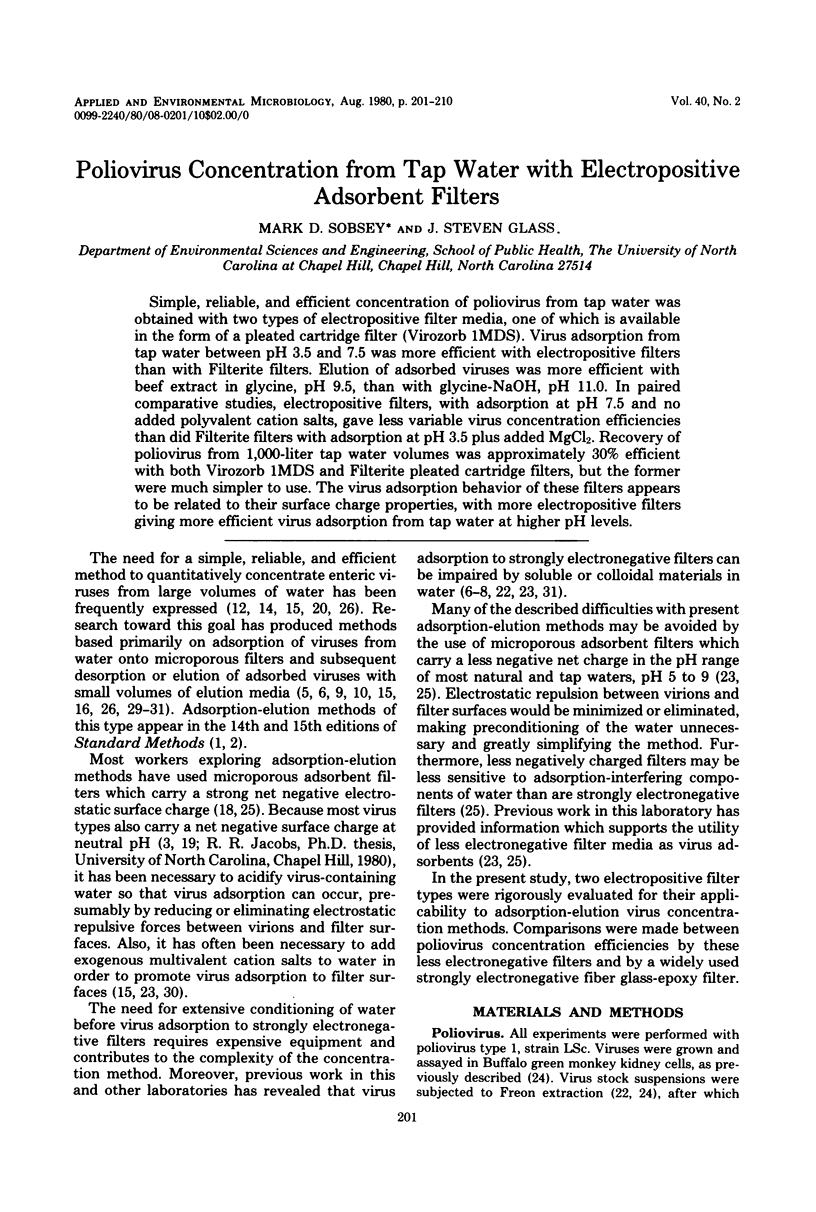
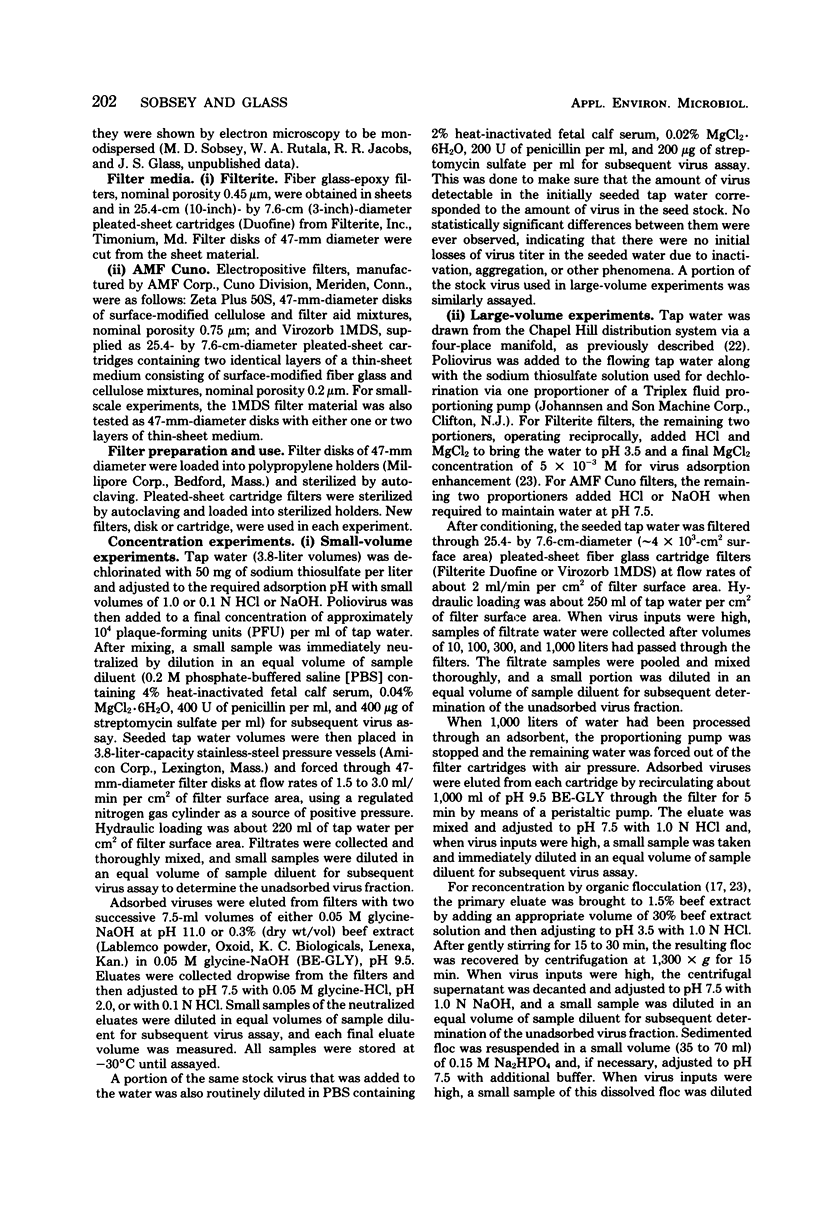
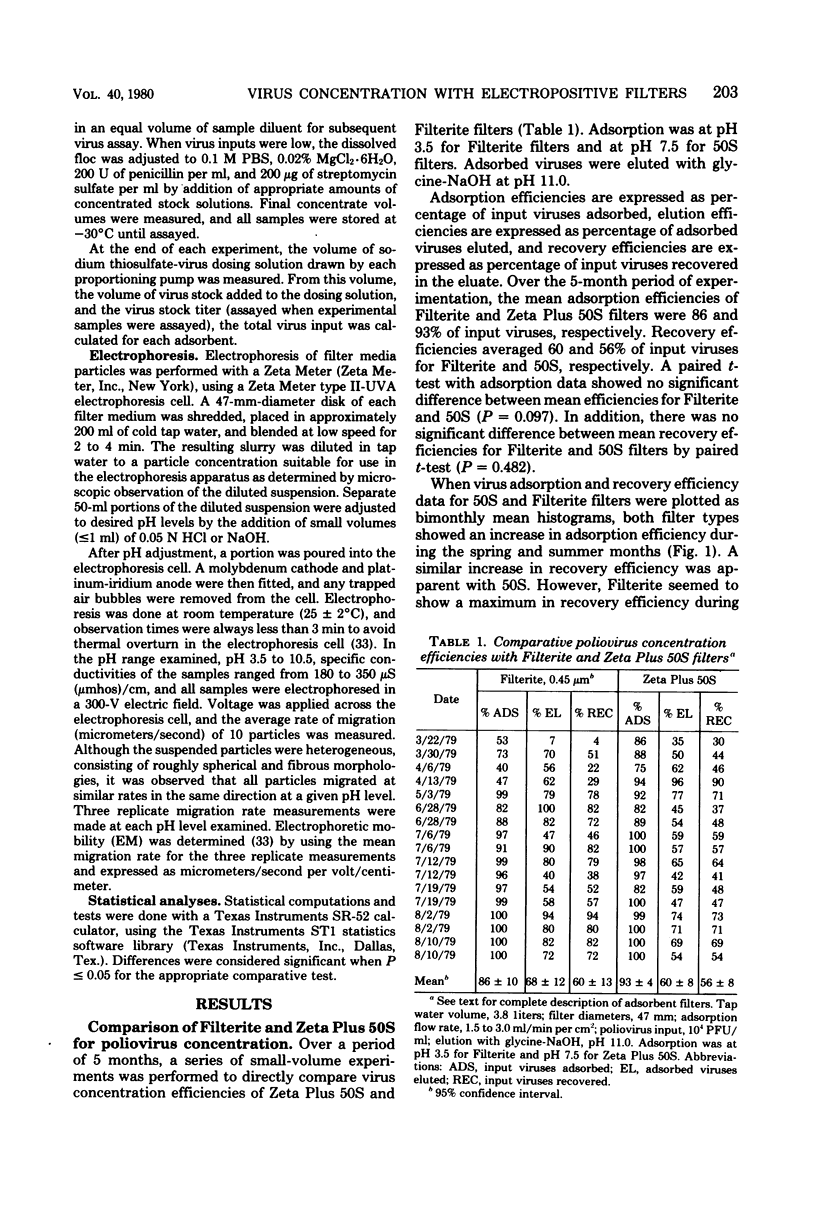
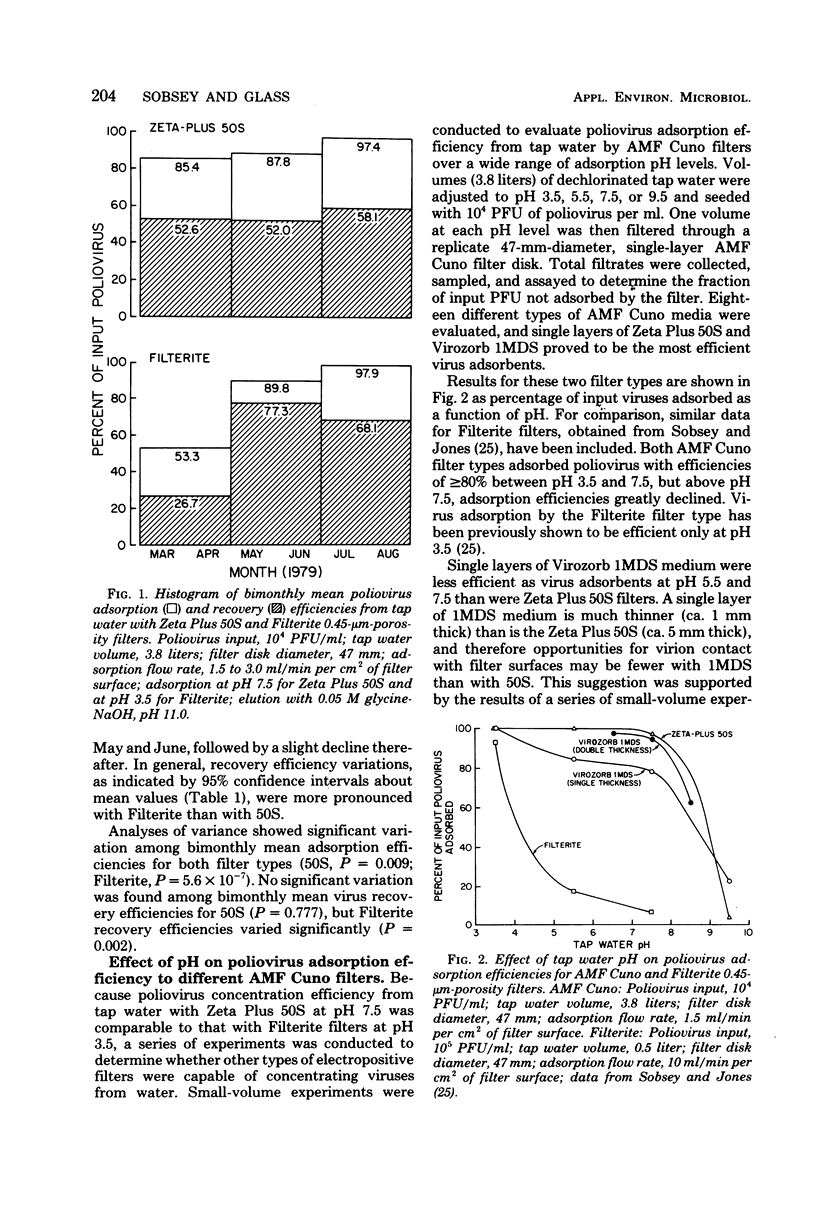
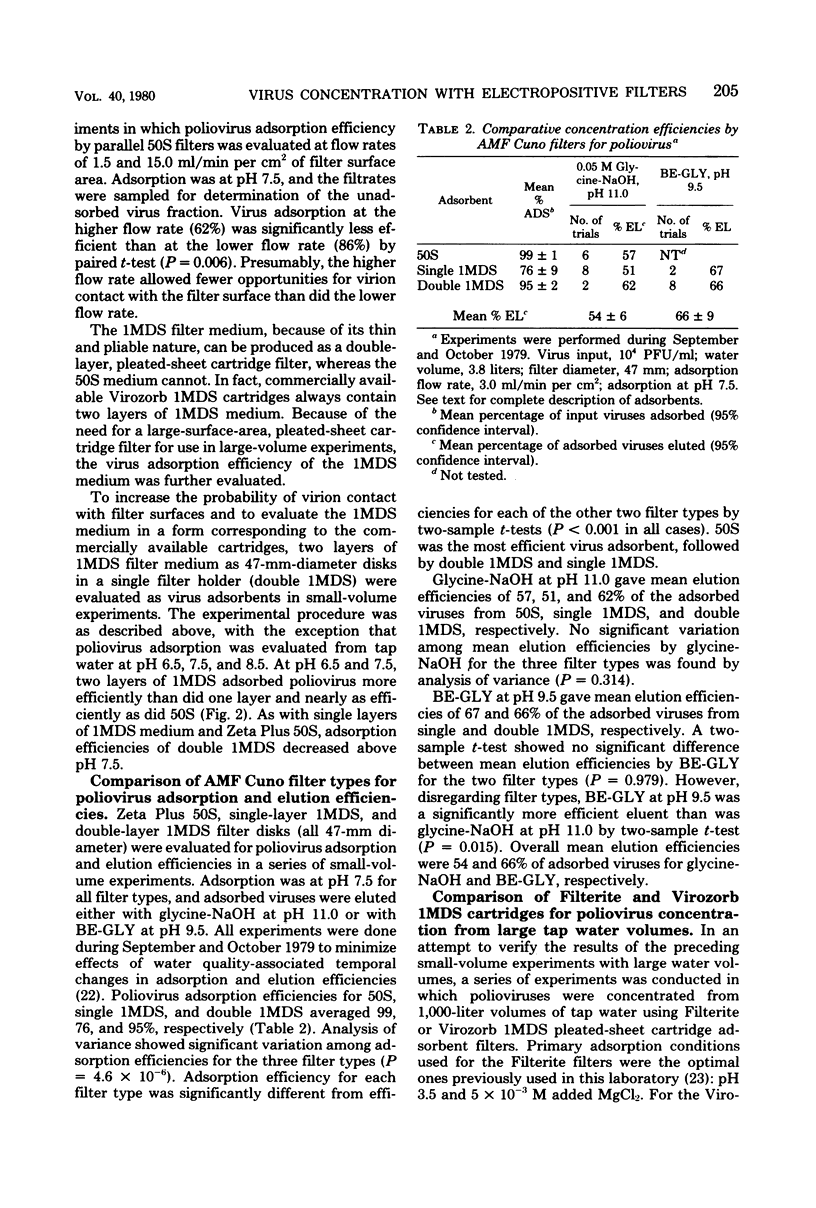
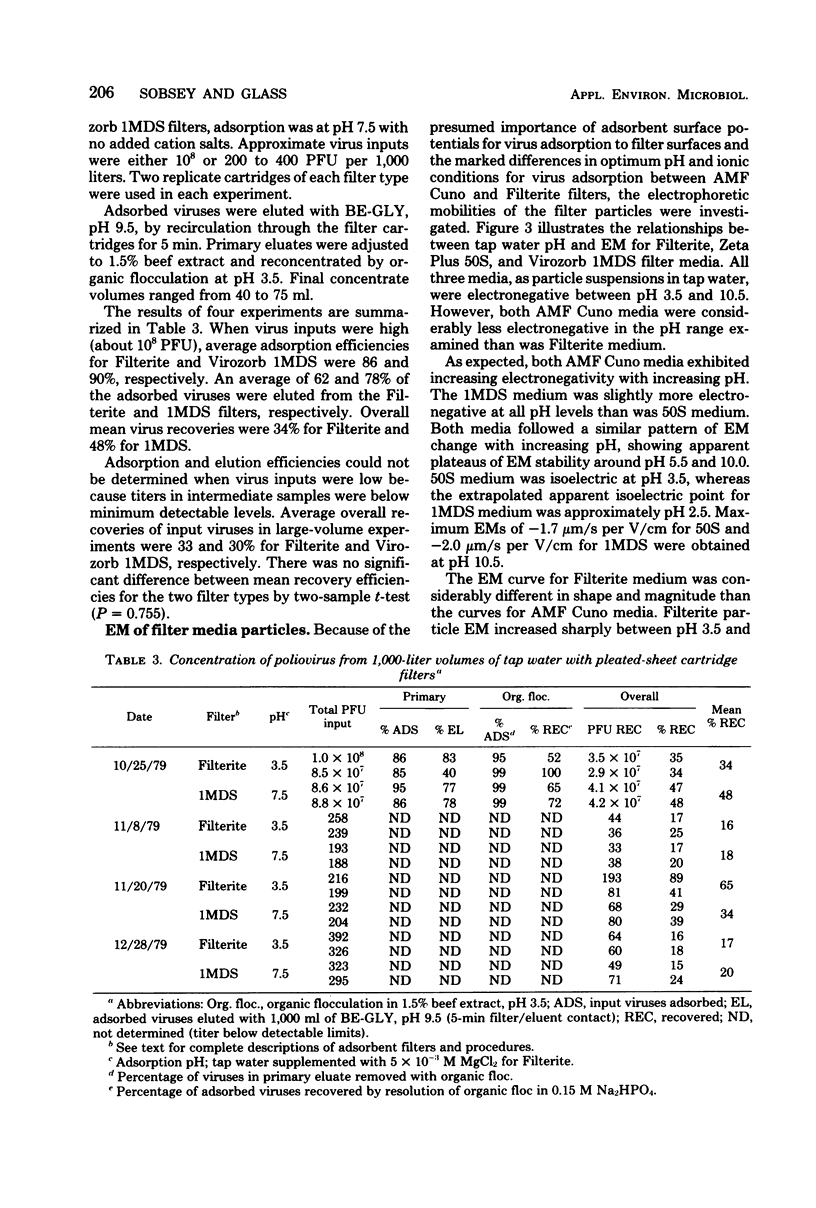
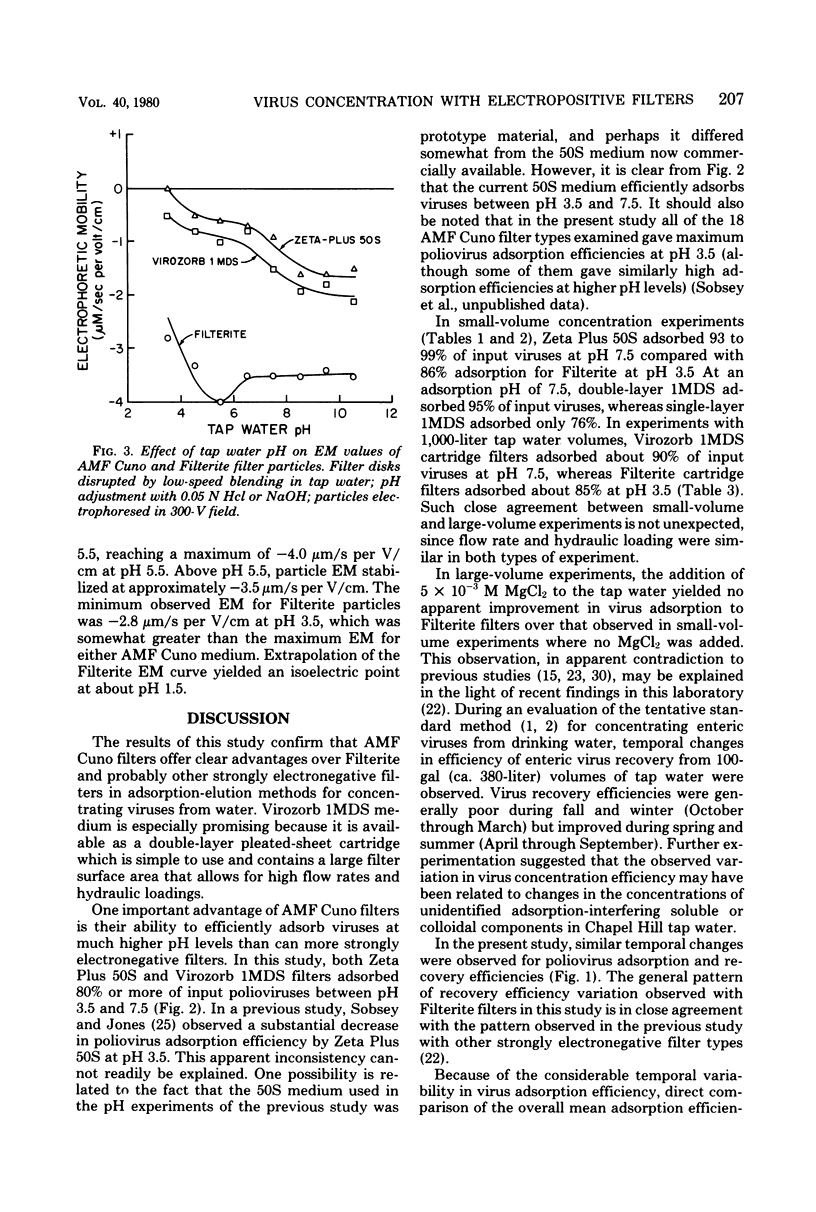
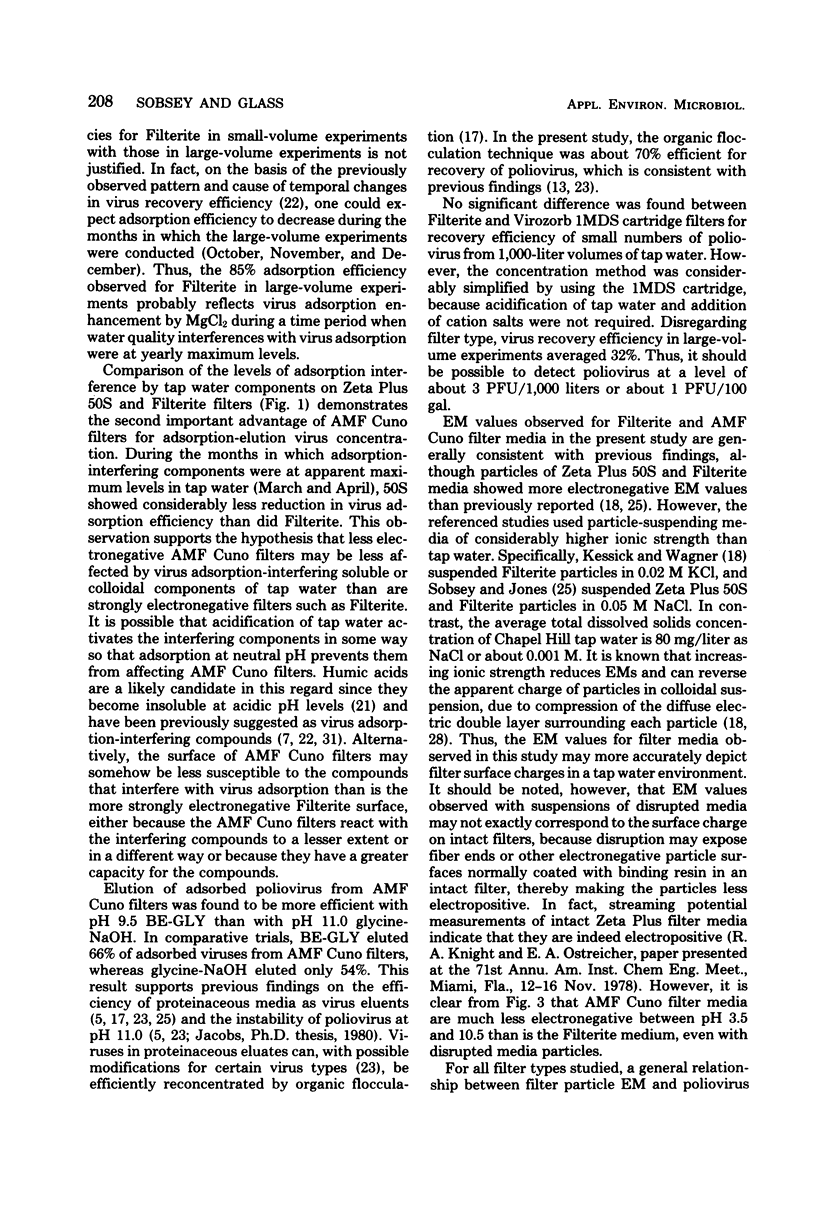
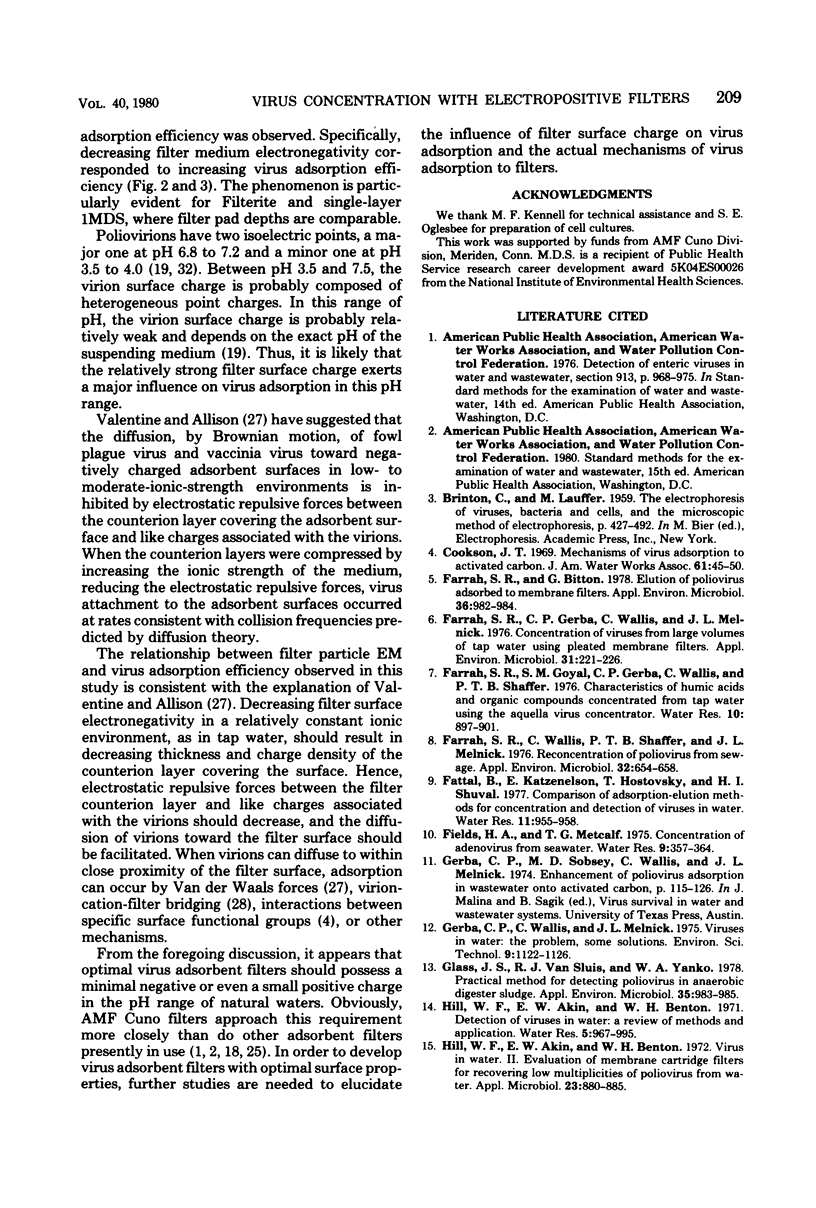
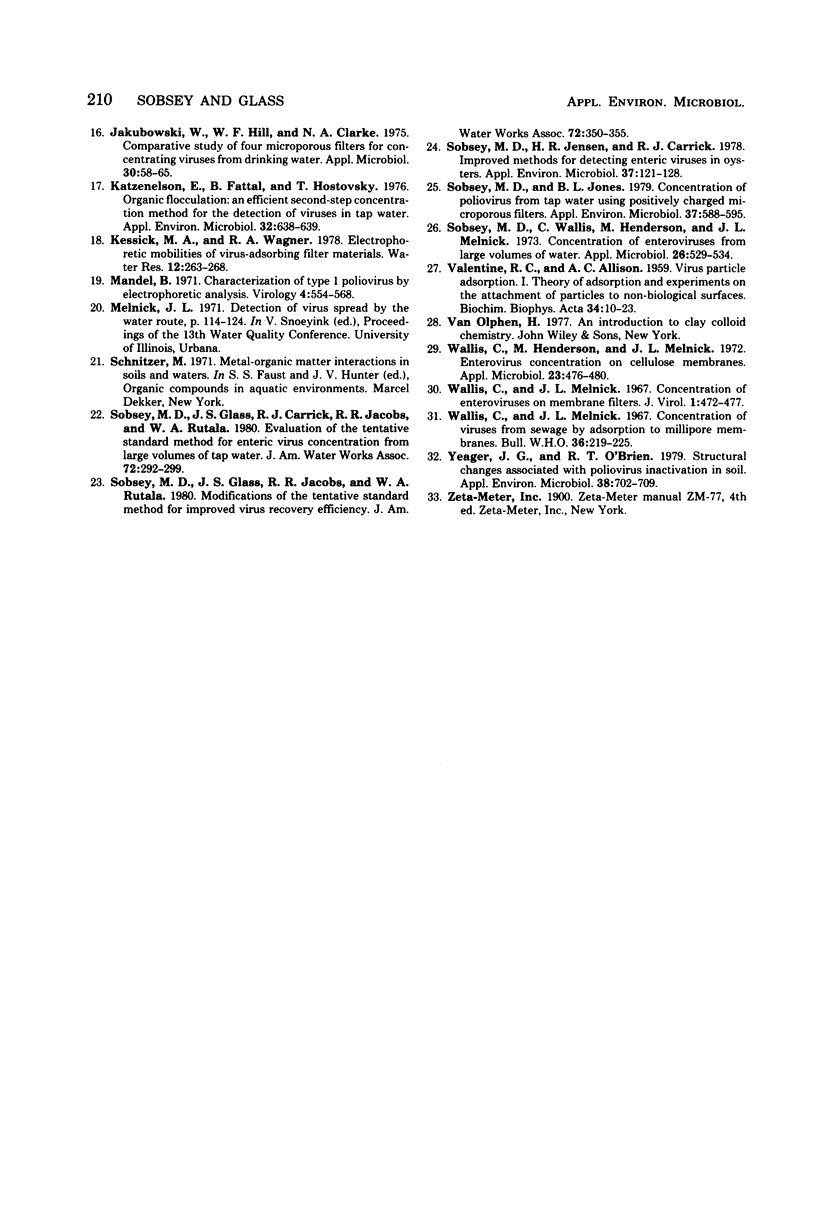
Selected References
These references are in PubMed. This may not be the complete list of references from this article.
- Farrah S. R., Bitton G. Elution of poliovirus adsorbed to membrane filters. Appl Environ Microbiol. 1978 Dec;36(6):982–984. doi: 10.1128/aem.36.6.982-984.1978. [DOI] [PMC free article] [PubMed] [Google Scholar]
- Farrah S. R., Gerba C. P., Wallis C., Melnick J. L. Concentration of viruses from large volumes of tap water using pleated membrane filters. Appl Environ Microbiol. 1976 Feb;31(2):221–226. doi: 10.1128/aem.31.2.221-226.1976. [DOI] [PMC free article] [PubMed] [Google Scholar]
- Farrah S., Wallis C., Shaffer P. T., Melnick J. L. Reconcentration of poliovirus from sewage. Appl Environ Microbiol. 1976 Nov;32(5):653–658. doi: 10.1128/aem.32.5.653-658.1976. [DOI] [PMC free article] [PubMed] [Google Scholar]
- Glass J. S., Van Sluis R. J., Yanko W. A. Practical method for detecting poliovirus in anaerobic digester sludge. Appl Environ Microbiol. 1978 May;35(5):983–985. doi: 10.1128/aem.35.5.983-985.1978. [DOI] [PMC free article] [PubMed] [Google Scholar]
- Hill W. F., Jr, Akin E. W., Benton W. H., Metcalf T. G. Virus in water. II. Evaluation of membrane cartridge filters for recovering low multiplicities of poliovirus from water. Appl Microbiol. 1972 May;23(5):880–888. doi: 10.1128/am.23.5.880-888.1972. [DOI] [PMC free article] [PubMed] [Google Scholar]
- Jakubowski W., Hill W. F., Jr, Clarke N. A. Comparative study of four microporous filters for concentrating viruses from drinking water. Appl Microbiol. 1975 Jul;30(1):58–65. doi: 10.1128/am.30.1.58-65.1975. [DOI] [PMC free article] [PubMed] [Google Scholar]
- Katzenelson E., Fattal B., Hostovesky T. Organic flocculation: an efficient second-step concentration method for the detection of viruses in tap water. Appl Environ Microbiol. 1976 Oct;32(4):638–639. doi: 10.1128/aem.32.4.638-639.1976. [DOI] [PMC free article] [PubMed] [Google Scholar]
- Mandel B. Characterization of type 1 poliovirus by electrophoretic analysis. Virology. 1971 Jun;44(3):554–568. doi: 10.1016/0042-6822(71)90369-2. [DOI] [PubMed] [Google Scholar]
- Sobsey M. D., Carrick R. J., Jensen H. R. Improved methods for detecting enteric viruses in oysters. Appl Environ Microbiol. 1978 Jul;36(1):121–128. doi: 10.1128/aem.36.1.121-128.1978. [DOI] [PMC free article] [PubMed] [Google Scholar]
- Sobsey M. D., Jones B. L. Concentration of poliovirus from tap water using positively charged microporous filters. Appl Environ Microbiol. 1979 Mar;37(3):588–595. doi: 10.1128/aem.37.3.588-595.1979. [DOI] [PMC free article] [PubMed] [Google Scholar]
- Sobsey M. D., Wallis C., Henderson M., Melnick J. L. Concentration of enteroviruses from large volumes of water. Appl Microbiol. 1973 Oct;26(4):529–534. doi: 10.1128/am.26.4.529-534.1973. [DOI] [PMC free article] [PubMed] [Google Scholar]
- VALENTINE R. C., ALLISON A. C. Virus particle adsorption. I. Theory of adsorption and experiments on the attachment of particles to non-biological surfaces. Biochim Biophys Acta. 1959 Jul;34:10–23. doi: 10.1016/0006-3002(59)90228-8. [DOI] [PubMed] [Google Scholar]
- Wallis C., Henderson M., Melnick J. L. Enterovirus concentration on cellulose membranes. Appl Microbiol. 1972 Mar;23(3):476–480. doi: 10.1128/am.23.3.476-480.1972. [DOI] [PMC free article] [PubMed] [Google Scholar]
- Wallis C., Melnick J. L. Concentration of enteroviruses on membrane filters. J Virol. 1967 Jun;1(3):472–477. doi: 10.1128/jvi.1.3.472-477.1967. [DOI] [PMC free article] [PubMed] [Google Scholar]
- Wallis C., Melnick J. L. Concentration of viruses from sewage by adsorption on millipore membranes. Bull World Health Organ. 1967;36(2):219–225. [PMC free article] [PubMed] [Google Scholar]
- Yeager J. G., O'Brien R. T. Structural changes associated with poliovirus inactivation in soil. Appl Environ Microbiol. 1979 Oct;38(4):702–709. doi: 10.1128/aem.38.4.702-709.1979. [DOI] [PMC free article] [PubMed] [Google Scholar]


